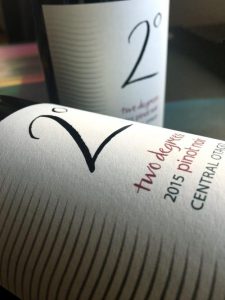I was privileged to be invited to a line up of Sauternes hosted by The Savage Club one of Melbourne’s leading private business clubs. A group of 20 assessed a selection of wines that included four French Sauternes.
BACKGROUND
The area of Sauternes is a small region located on the left bank of the Garonne 40 kms south-east of Bordeaux. (refer map below). This area is crossed by the Ciron, a small tributary of the Garonne. The Sauternes appellation extends approximately on 1956 hectares (Barsac included) and on the territory of five towns: Sauternes (416 ha), Bommes, Fargues, Preignac and Barsac.
The wines of Sauternes are gilded, sweet, but also fine and delicate. Their bouquet develops very well with ageing, becoming rich and complex, with crystallized orange, hazel nut and honey notes. It is the botrytis or noble rot treatment of Sauterne wines which result in its taste and unique flavours.

Noble Rot
Botrytis or ‘noble rot’, is a beneficial mold that grows on ripe wine grapes in the vineyard under specific climatic conditions. The mold dehydrates the grapes, leaving them shriveled and raisin like and concentrates the sugars and flavours. Wines made from these berries have a rich, complex, honeyed character and are often high in residual sugar. Botrytis contributes the unique, concentrated flavors in such wines as Rieslings from Germany, Sauternes from Bordeaux, Aszú from Hungary’s Tokay district and an assortment of late-harvest wines from other regions including Australia and New Zealand.
TASTING NOTES
2013 Filhot 2nd G C C 1855 Sauterne
The Château Filhot was founded in 1709 by Romain de Filhot and is now owned and managed by one of his descendants: Count Henri de Vaucelles.
The estate covers an area of 350 hectares with 62 hectares of vineyard all along the south of the Sauternes village in the Sauternes appellation.
I found this 2nd growth Sauterne (classified in 1855) light, bright and not too tight with minimum density. The easy drinking Sauvignon Blanc/Semillon blend showed a profile of apricot, vanilla and sweet, candied, oranges. This is a good sweet upfront wine to serve as an aperitif which it was. A$40.00. 375 ml. WC 16/20
2005 Chateau Coutet Sauternes
Traced back to 1643, Château Coutet is one of the oldest vineyards in the Sauternes wine region. Standing over its main courtyard, are a number of towers believed to originate from the late 13th Century.
It is also home to the longest Sauternes vat room with a 110-metre long cellar that houses more than 860 barrels, arranged into four single, parallel lines. It is a big show!
This wine exhibited a gorgeous coppery colour which opened to a rich, full concentrated nose of apricot, orange pith and honey. The palate was very rich and concentrated typical of beautiful botrytis treatment. It had power and freshness with a beautiful powerful finish. I understand that this was one of Barsac’s great vintages. A$80.00 375 ml. WC 19/20

2011 Chateau Doisy-Vedrines
Chateau Doisy-Védrines’s 27 hectares of vineyards are situated on the highest plateau in Barsac and are planted with 80% Sémillon, 15% Sauvignon Blanc and 5% Muscadelle. By Sauternes standards the yields are very low. The Chateau produces one of the richest and most full-bodied wines in Barsac and needs at least 5 years bottle ageing and the best vintages will keep for up to 25 years.
I enjoyed the distinctive honeysuckle and orange overtones in this one. Yummm. The finish continued to linger on showing a nice orange sweet finish and superb acidity. A75.00. 375 ml. WC 17/20.
1989 Chateau Suduiraut Sauternes
Suduiraut is undeniably one of the great estates of Sauternes. It is just down the road from Chateau Yquem and abutts Yquem’s vineyards on the north. Suduiraut is one of the great wines of Sauternes. For example, the 1990, 1989, 1988, 1982, 1976, 1967, and 1959 are outstanding. It’s very rich, luscious flavours are often confused with Chateau Yquem.
This was a rich amber golden colour, with a complex and deep, mature nose, peaches and cream, slightly dry, but rich and powerful. At its peak. A$170.00 375 ml. W C 18/20
Summary
It was great to settle down and try some lovely Sauternes but it is a pity that people just do not seem to buy French Sauternes anymore. Aficionados excepted but it’s the price coupled with a lack of understanding of the appellation system in France and knowledge of the various Chateaus that I think deters people.
Putting that aside Australia and New Zealand do present some lovely late picked value wines that you will enjoy. Some of my favourites are the well known De Bortoli Noble One Semillon $24.00, Tim Adams Botrytis Riesling $25, Margan Botrytis Semillon $22, or my favourite Miranda Golden Botrytis blend $18.00.
In NZ look out for the Giesen ‘The Brothers’ late harvest Sau Blanc $30.00, or the Forest Wairau Valley Noble Riesling $50.00..
What do you think?


 Vineyards this far south need to be on north-facing hillsides. It satisfys the vines’ thirst for sunny mornings. Hillside vineyards receive more direct sun than vineyards on the valley floor. Also, valley floors tend to pool cold air at night and make vines more susceptible to frost. An exception to this is the multi winning trophy Two Degrees vineyard in the sub region of Queensberry located between Cromwell and Wanaka. Here it lies between on one side, the Pisa mountain range and on a gradient of 2 degrees the raging Clutha River. The Clutha is the second longest river in NZ and the longest in the South Island. Because of this unique location the cool mountain air is sucked over the vineyard by the river so Two Degrees does not get frosts but benefits from very sub cool nights and hot days frost free..
Vineyards this far south need to be on north-facing hillsides. It satisfys the vines’ thirst for sunny mornings. Hillside vineyards receive more direct sun than vineyards on the valley floor. Also, valley floors tend to pool cold air at night and make vines more susceptible to frost. An exception to this is the multi winning trophy Two Degrees vineyard in the sub region of Queensberry located between Cromwell and Wanaka. Here it lies between on one side, the Pisa mountain range and on a gradient of 2 degrees the raging Clutha River. The Clutha is the second longest river in NZ and the longest in the South Island. Because of this unique location the cool mountain air is sucked over the vineyard by the river so Two Degrees does not get frosts but benefits from very sub cool nights and hot days frost free..







